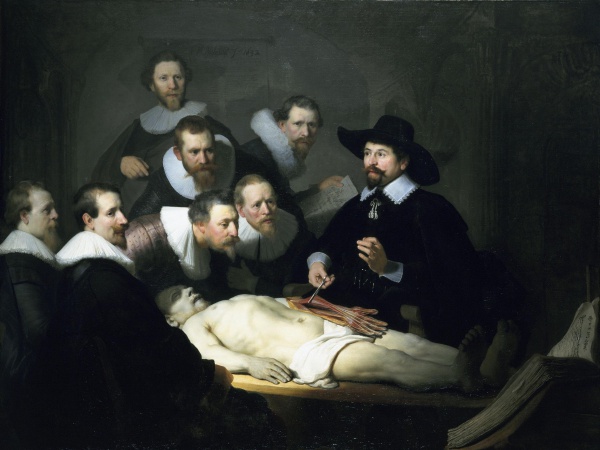Facts About The Anatomy Lesson of Dr. Nicolaes Tulp
"The Anatomy Lesson of Dr. Nicolaes Tulp" is a renowned oil painting from 1632 by the master artist Rembrandt. This masterpiece is housed in the Mauritshuis museum in The Hague, Netherlands. The painting captures a moment where Dr. Tulp explains the muscles of an arm to a group of his colleagues. Intriguingly, some of these colleagues actually paid to be included in the artwork. This piece is one of Rembrandt's early masterpieces and is notable for featuring his full signature for the first time.
The scene depicted in the painting is a public dissection, a significant social event in the 17th century. Rembrandt broke with tradition by placing a full-length corpse at the center of the composition. This corpse belonged to Aris Kindt, a criminal sentenced to death for armed robbery and subsequently hanged. Art historians have examined details such as the shading on Kindt's face and the shape of his navel. While Rembrandt's depiction of the muscles and tendons has been widely praised, some anatomical inaccuracies have been noted.
There are related works, including a damaged painting by Rembrandt and a copy by the artist Édouard Manet. Over the years, "The Anatomy Lesson of Dr. Nicolaes Tulp" has inspired numerous references in literature, art, film, and even video games.
In popular culture, the painting has appeared in films like "The Body Snatcher" and "Barbara" as well as in novels such as "The Goldfinch" and "The Anatomy Lesson." The iconic artwork has also been paid homage to in video games like "Deus Ex: Human Revolution."

 Belgium
Belgium